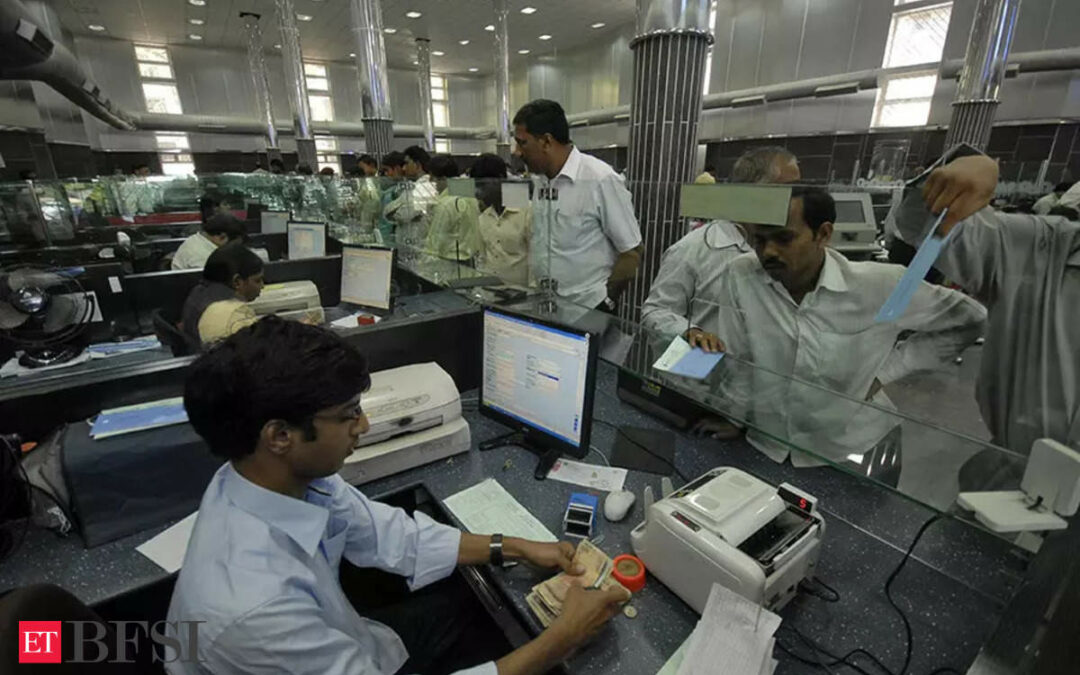Indian banks are currently facing a significant backlog in debt recovery cases, with a projected timeline of seven years to resolve them at the present rate. Over 200,000 cases are awaiting resolution in Debt Recovery Tribunals (DRTs), which manage approximately 30,000 to 40,000 cases annually. From 2017 to 2022, DRTs successfully resolved 145,000 cases, highlighting the immense pressure on the system.
To address this issue, the government has proposed enhancing the capacity of both DRTs and National Company Law Tribunals (NCLTs) in the latest Budget. This initiative aims to strengthen the Insolvency and Bankruptcy Code (IBC) and improve the debt recovery process.
There has been a significant increase in cases referred to DRTs for 2022-23, with the amount involved rising to Rs 4.02 trillion in FY23 from Rs 69,000 crore. However, the recovery rate via DRTs dropped to 9.2 percent in FY23 from 17.5 percent the previous year, resulting in a decrease in the recovery of non-performing assets to 15 percent from 17.6 percent in FY22. In contrast, recoveries via IBC returned to over 40 percent in FY23 after two slower years.
Additionally, the sale of stressed assets to asset reconstruction companies surged in FY23, largely due to the newly operationalized National Asset Reconstruction Company Ltd (NARCL). During 2022-23, 9.7 percent of the previous year’s gross NPAs of scheduled commercial banks were sold to ARCs, compared to 3.2 percent in 2021-22, according to RBI data.
Recovery efforts
With trillions of rupees locked up in cases under DRTs and NCLTs, the government has directed the chiefs of Public Sector Banks (PSBs) to monitor the top twenty defaulter loan accounts personally for faster recovery. This move is expected to boost the banks’ bottom lines, as the bad loans have already been fully provisioned. Following the rise of gross non-performing assets (GNPA) of the PSBs to 14.5% in March 2016, the government implemented measures to strengthen the banking regulatory framework, amend recovery laws, and establish a public sector asset reconstruction company. These actions have improved the credit sector’s health, reducing the GNPA ratio to 2.8% in March 2024.Case pileup
Currently, 220,000 cases involving Rs 16.27 trillion are pending with DRTs, most of which are dues to PSBs. Similarly, 2,431 cases involving Rs 1.52 trillion are pending in DRATs. Staff shortages have been cited as a major reason for the high pendency of cases. The government has announced plans to reform and strengthen these tribunals, including the establishment of additional tribunals to expedite recovery.
Currently, India has 39 DRTs and five Debt Recovery Appellate Tribunals (DRATs), but they are overwhelmed by the volume of cases. Approximately 60,000 new cases are filed each year, yet only 30,000 to 40,000 are resolved.
The IBC has shown effectiveness, resolving over 1,000 companies and recovering Rs 3.3 trillion for creditors. Notably, around 28,000 cases involving more than Rs 10 trillion have been settled before formal admission under IBC procedures. Despite these reforms, recovery through DRTs lags behind other mechanisms like the Securitisation and Reconstruction of Financial Assets and Enforcement of Security Interest (SARFAESI) Act, which allows banks to enforce security without court intervention.
In the last five years, an average of 1,500 cases have been filed in each DRT annually, with an average of 843 cases decided. Recovery through DRTs was Rs 12,879 crore in FY22, Rs 7,669 crore in FY23, and Rs 11,117 crore in FY24. The government also plans to make appropriate changes to the IBC, reform the tribunal and appellate tribunal systems, and establish additional tribunals to speed up insolvency resolution. Some of these tribunals will be designated to decide cases exclusively under the Companies Act.
Since 2016, 31,394 corporate debtors involving a value of Rs 13.9 trillion have been disposed of, including pre-admission case disposals, as of March 2024 under the IBC.











